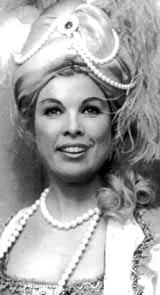The Bel Canto Path
We pay tribute to the Bel Canto Era composers and singers, for their influence on those who thrived then and survive today, and, although Bel Canto may seem ambiguous-even in this 21st century, we need become aware that Bel Canto is a singing style as well as a vocal technique, and it offers a universal underpinning for singers and musicians to encompass all styles of all composers, with solid technical basis and stylistic savvy.
This is the first step for present day singers to reliable performing paths, a la those singers of yesteryear, while also honoring the interest and devoted constancy of audiences.
Voice Classificstion During the 1800's
Refinements occurred to voice classification during the 1800’s as the INTERNATIONAL OPERATIC REPERTOIRE slowly split into nationalist schools, and whole NEW CATEGORIES of singers evolved, such as:
1. A widened version of Mozart’s “pants roles” for Mezzos (expanding the Mezzo roles to include character Mezzo roles and leading Mezzo roles)
2. Then the Bass-Baritone and Bass arose towards the end of the 1800s, as did such new sub-categories as,
3. Lyric Coloratura Soprano (the name of which came from the concept of many blackened fast notes on a page, creating the most COLOR on the page…this voice could sing these notes the fastest)
Then, there was the,
4. Dramatic Soprano and,
5. Spinto Soprano,
6. And various gradations of the Tenor voice-stretching from the lightest Tenor, through Lyric, Spinto, and Heroic.
These VOCAL CATEGORY changes have had a lasting effect in the way teachers designate voices and opera managements cast their productions (even today)
Tenor High Notes
It all started with an Italian Tenor and a French Tenor pitting High C’s against each other in two successive Rossini opera events.
Rossini was totally unimpressed with these newly contrived high register notes, but singing history for tenors had thus changed, so Rossini, with his nose for trends, went “all out” and composed repertoire for several tenors, all together, in many of his subsequent works-altogether exploiting tenor high notes and fast notes!
Nicola Vaccai - Bel Canto Composer, Voice Teacher
Interesting is that a significant pedagogue of the BEL CANTO ERA, is still very relevant today:
Nicola Vaccai, a bel canto composer of the early 1800's (his opera Giulietta e Romeo, a big influence to Bellini’s operas, Il Pirata and Norma), is now, as composer, less known, but his approach to the bel canto art of singing still remains, as vocal textbook, selectively influential among today’s international voice teachers and voice students.
Verdi – Great Identity
Verdi sung in Italy, and upon Verdi's own native earth, ignites in the Italian audiences an uncanny identification with their own communal spirit. No holds barred! Absolutely none! And Verdi's uncanny technical understanding of the human voice and ingenuity and canny understanding of the expression of human emotion, to say nothing of his radar for sending a message through melody, are greatest exemplified in Verdi operas-early middle or late periods. Just pick one! And what greater opera than Verdi's Requiem? What greater libretto than a mass? Verdi's delicious serving of vocal challenge amidst the healthiest of artistic and musical palates is enlightening at every performance-at every rehearsal. To sing Verdi in Italy is an exhilarating, high wire experience.
Critical View
What others say to you can be a reflection-a mirror-of a subtle voice within you, and it can also, very often, be a voice within those speaking.
For example, if others are critical of you, it is often a reflection of who they are and how they view the world and themselves in it. So, be fair to yourself, and also others, as you assess criticism-given or taken.

|



